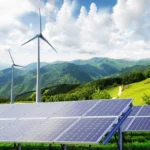Globally,10% of the population with the highest income accounted for nearly half (48%) of emissions with two-thirds of this group living in developed countries. Current and historical emissions are highly unequally distributed globally, the United Nations Environment Programme (UNEP) said on Monday referring to India’s example.
Per capita territorial GHG emissions vary significantly across countries. They are more than double the world average of 6.5 tons of CO2 equivalent (tCO2e) in the Russian Federation and the United States of America, while those in India remain under half of it.
“Inequality in consumption-based emissions is also found among and within countries. Globally, 10% of the population with the highest income accounted for nearly half (48%) of emissions with two-thirds of this group living in developed countries. The bottom 50% of the world population contributed only 12% of total emissions,” UNEP’s Emissions Gap Report 2023 titled “Broken Record” said on Monday.
Historic emissions and contribution to global warming similarly vary significantly across countries and groups of countries, UNEP has said explaining that nearly 80% of historical cumulative fossil and land use CO2 emissions came from G20 countries, with the largest contributions from China, the US and the European Union, while least developed countries contributed 4%. The US accounts for 4% of the current world population, but contributed 17% of global warming from 1850 to 2021, including the impact of methane and nitrous oxide emissions. India, by contrast, accounts for 18% of the world population, but contributed 5% of warming.
Only nine countries have submitted new or updated NDCs since COP 27 last year, bringing the total number of NDCs that have been updated since the Paris Agreement to 149.
As at 25 September 2023, 97 Parties covering approximately 81% of global GHG emissions had adopted net-zero pledges either in law (27 Parties), in a policy document such as an NDC or a long-term strategy (54 Parties). All G20 members except Mexico have set net-zero targets but overall net zero goals do not inspire confidence, the report said.
Limited progress has been made on key indicators of confidence in net-zero implementation among G20 members, including legal status, the existence and quality of implementation plans, and alignment of near-term emissions trajectories. None of the G20 members are currently reducing emissions at a pace consistent with meeting their net-zero targets, the report added.
The report calls on all nations to deliver economy-wide, low-carbon development. Coal, oil and gas extracted over the lifetime of producing and planned mines and fields would emit over 3.5 times the carbon budget available to limit warming to 1.5 degree C, and almost the entire budget available for 2 degree C, the report said.
“The low-carbon development transition poses economic and institutional challenges for low and middle-income countries, but also provides significant opportunities. Transitions in such countries can help to provide universal access to energy, lift millions out of poverty and expand strategic industries. The associated energy growth can be met efficiently and equitably with low-carbon energy as renewables get cheaper, ensuring green jobs and cleaner air,” it added while underlining that international financial assistance will have to be significantly scaled up, with new public and private sources of capital restructured through financing mechanisms for such a transition.
“UNEP’s Emissions Gap Report further reinforces what the Global Stocktake has clearly demonstrated, that the world is off-track on delivering 1.5C. The science is clear: we must do more. The world must respond to the GST with the highest ambition decision at COP28. This includes fast-tracking a just and orderly energy transition to close the emissions gap. To do so, we must triple renewable energy capacity and double energy efficiencies, tackle methane emissions, and accelerate decarbonization ambitions across heavy emitting sectors by 2030,” the COP28 Presidency said in a statement.
“The latest Emissions Gap Report 2023 presents a chilling reality. Our world is teetering on the edge of a catastrophic temperature rise, with predictions pointing towards a 2.5-2.9°C increase above pre-industrial levels if current trends continue. We are on thin ice. The stark reality is that the projected emissions from coal, oil, and gas extraction are on track to exceed the carbon budget needed to limit warming to 1.5°C by over 3.5 times,” said
Harjeet Singh, head of global political strategy at Climate Action Network International.
“The window for action is rapidly closing, and unless we act urgently and dramatically to shift away from fossil fuels and embrace green energy, the chances of limiting warming to even 1.5°C are dismally low. This vast contrast between our current trajectory and the Paris Agreement goals highlights the failure of rich countries to meet their climate commitments. They have not only fallen short in reducing emissions but also in providing essential financial support to nations most vulnerable to climate impacts. This represents a glaring gap between rhetoric and reality,” he added.
Source: The Hindustan Times
















